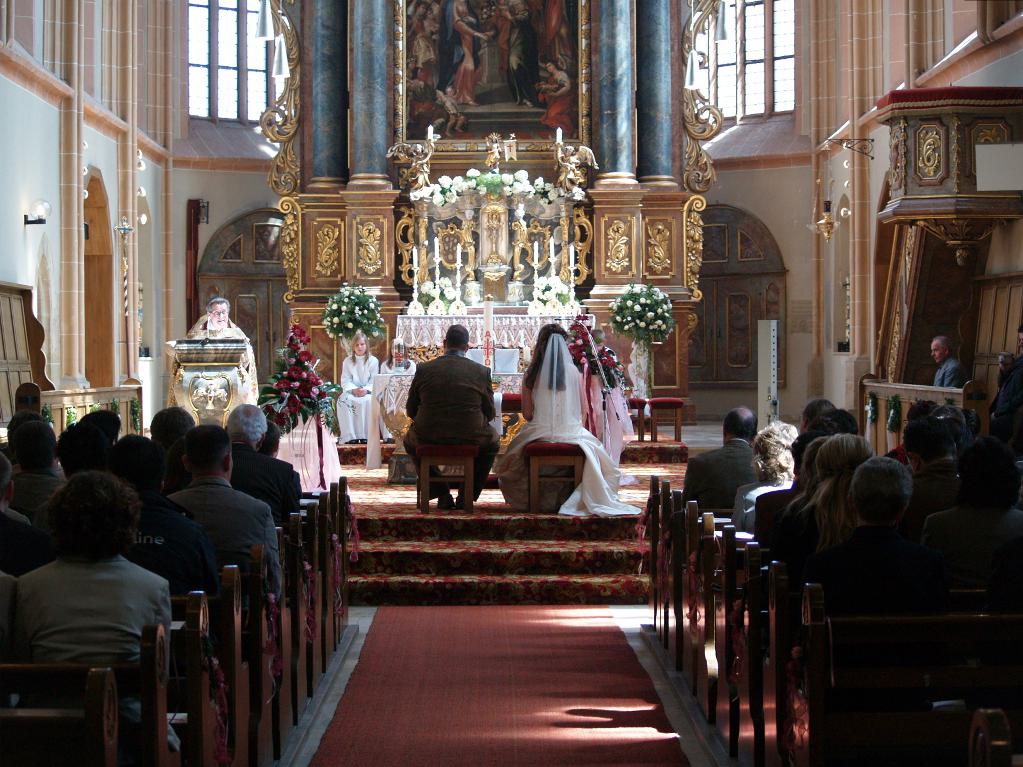
I read a question in a forum: “I want to film a wedding with a fixed camera on a tripod. I have an OM-1, 60mm, 7-14 and 40-150 at my disposal. What should I take?”
The answers are, as usual in forums, broadly diversified from “leave it” to “14mm” to “40-150”.
What does the “professional” recommend?
It is not possible to derive a recommendation from the information available. The questions are:
- How big is the room?
- How bright is the room and how consistent is the lighting?
- Should the guests be on it?
- Should the bride and groom be on it completely or just their upper bodies?
We don’t know what the situation is with the friendly enquirer because no one has asked her.
For the sake of demonstration, let’s assume a small standard church. The camera should be positioned in the choir on the right – i.e. stage left – at a distance of 3 metres from the altar. The wedding ceremony takes place in the afternoon at 2 p.m., the weather forecast is cloudy, so diffuse light with 5 to 6 EV. (Let’s not assume a Romanesque chapel).
The entire wedding ceremony is to be filmed, so FullHD with 30fps (unless the church is still lit with “energy-saving lamps”, then with 25fps) (This only applies to Europe with 50Hz mains frequency-)
So we have 1/30s, maximum ISO 1600, so I can stop down to a maximum of 5.6.
Distance 3m and both people in the bridal couple should be in focus in FHD, so I need a depth of field of about 2 metres. Assuming a permissible circle of confusion diameter of 0.014, this means a maximum focal length of 28mm.
Now the question is the angle of view. 28mm is just about enough at a distance of 3 metres at 4:3, but we have 16:9, which crops the top and bottom considerably. So we need a maximum of 17mm so that we have the bride and groom standing and there’s still a bit of room at the top and bottom.
Small problem: we don’t have a 17mm lens.
Solution: we take the 7-14 and switch on the 1.4x teleconverter in the camera. Then we set the lens to about 12mm. Oh yes, switch off the stabiliser on the tripod and of course switch off the AF and video mode M. Otherwise the AF often goes into the woods and with automatic exposure it gets dark in the church when the bride gets up.
A few interior photos of the church with EXIFs and a rough floor plan for the distances and then you can easily calculate the required optics.
The cover picture? A wedding with the E-500. The dynamic range of cameras has improved somewhat since 2006. Incidentally, this was a photo taken at a press event back then. Afterwards, the bride and groom were quite naturally asked about their profession, how they met and their desire to have children – and then it was widely publicised in the newspaper. (And no, it wasn’t this photo that ended up in the newspaper, but the photo after the wedding and from the front).
Ein passender Beitrag zum Tag der Mathematik! 😉
na hoffentlich schickt jemand der TO den Link hierher, sonst wird das nix mit Hochkzeitsvideo
Dies ist doch eine Insel die keiner kennt….. 🙂
Böse Zungen behaupten, dass es bereits geschehen ist.
“Alles nur Gerüchte zum Mitnehmen.”